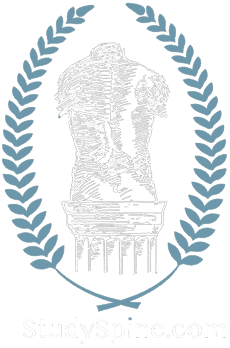Course Syllabus
Lecture Series; “Lumbar Spine A-Z”
Donald Steven Corenman, M.D., D.C.
Proposed Presentation Dates- One weekend seminar every 4 months around the country
CME is expected to accompany each seminar
This is a 12 hour lecture and video weekend lecture course designed to educate the practitioner in the diagnosis and treatment of lumbar spine disorders divided into two 6 hour days
Course Objectives:
By the end of the course, participants should be able to:
- Understand the anatomy, biomechanics, pathology, degenerative and traumatic injuries that occur in the lumbar spine
- Develop the ability to take a thorough, probing and accurate history
- Understand how to perform a meticulous, reproducible physical examination using videos of actual patients with pathological conditions videoed during the examination
- Develop the knowledge of what imaging studies are appropriate and how to order these studies
- Develop skills to interpret these imaging studies such as X-rays, MRIs, CT scans (with or without myelogram) and bone scans
- Apply analytical skills to evaluate all collected information and develop a differential diagnosis.
- Understand the foundations for rehabilitation therapy and use of manipulation
- Develop the ability to recognize spinal trauma and understand conservative and surgical management
- Understand the benefits and pitfalls of neurological consultations with EMG and NCV testing
- Understand adolescent idiopathic scoliosis and how to manage this disorder
- Understand adolescent lower back disorders and how to manage these disorders
- Understand the role of diagnostic and therapeutic injections in treatment of spinal disorders
- Understand the indications for surgical intervention and what surgeries are appropriate
- Understand how to communicate and relate findings to other practitioners and understand the different specialties that are involved in spine care
Course Reading
The textbook “The Clinician’s Guidebook to Lumbar Spine Disorders” (Author House 2011, Donald S. Corenman, M.D., D.C.) will be the source material and every participant will be given this text prior to the course.
Course Outline
Introduction
Anatomy of the Lumbar Spine and Pathophysiology of the Disc and Nerves
Osseous anatomy
Ligamentous anatomy
Discal anatomy
Facet anatomy
Cauda Equina anatomy
Mechanics of flexion/extension-effects on the disc, canal, facets and foramen
Muscles of the lumbar spine
Pelvic muscle control affecting lumbar spine
Discal anatomy/annular construction
Annular tears/nociceptors
Autonomic nervous system
Nerve cell anatomy/physiology
Reflex arc
Pain
Sources of Lower Back Pain and Leg Pain
Back pain generators
Annular tear
Degenerative disc disease
Isolated disc resorption
Facet disease
Central spinal stenosis
Hyperkyphosis thoracic spine-lumbar facet syndrome
Degenerative spondylolisthesis
Isthmic spondylolisthesis
Flat back disorders
Degenerative scoliosis
Sacroiliac, buttocks and leg pain generators
Herniated disc/posterolateral and far lateral
Foraminal stenosis/collapse
Lateral recess stenosis
Spinal stenosis
Sacroiliac joint dysfunction
Piriformis syndrome
Cauda Equina Syndrome
Myelopathy
Hip joint pathology
Insertional tendinosis/greater trochanteric bursitis
Peripheral nerve entrapment
Taking an Appropriate History
What to look for
How to ask the appropriate questions
History of symptoms
- Onset
- Traumatic vs non-traumatic
- Time of day (night pain)
- VAS
- Weaknesses noted
- Balance and bowel/bladder
- Activities that aggravate and resolve
- Activities modified or terminated
- Sports activities modified or terminated
Prior treatments
Prior consultations
Prior imaging
Prior diagnostic blocks
Prior surgeries
Using the information in a differential diagnosis
Gait Analysis
Mechanism of walking
Muscles used in gait
How neurological muscle weakness will manifest in gait disorders
Physical Examination
What to look for
Initial contact (taking the history)
Chair sitting postures
Rising out of chair
Gait analysis (abnormals due to myelopathy, multiple sclerosis and radiculopathy)
Trendelenberg gait
Standing/walking muscle stress/fatigue testing
Walking maneuvers/balance testing
Plumb line/scoliosis/kyphosis testing
Flat back syndrome differential testing
Flexion/Extension testing
Assessing lumbo-pelvic rhythm
Phalen’s maneuver
Inspection of the legs
- Fasciculations
- Edema
- Complex Regional Pain Syndrome (CRPS)/ (RSD)
- Vascular signs
- Skin signs (shingles, target lesions, venous insufficiency)
- Capillary refill
- Arterial doppler
Muscle testing/circumferential measures
Hip tests
Dermatomal testing
Deep Tendon Reflexes (DTR)
Long tract signs (hyperreflexia/clonus/Hoffman’s signs)
Proprioceptive testing/myelopathy
Lower extremity peripheral nerve entrapment testing
Supine provocative testing
Cranial nerve testing
Prone provocative testing
Palpation
Waddell signs
Putting it all together
X-ray Imaging Interpretation
What various X-ray images can convey
Normal variants
Degenerative disc disease/isolated disc resorption
Instability
Alignment issues
Slips (anterio/retrolisthesis/rotary listhesis)
Scoliosis
Foraminal stenosis/collapse
Bartolotti’s syndrome
Mach lines
Infection
Soft tissue information
MRI and CT (myelogram) Interpretation
MRI
MRI excitation/relaxation sequences and how to use them
T1, T2 and STIR images
Comparing axial, sagittal and coronal images
Degenerative disc disease/annular tears
Disc “bulging”
Disc herniation (posterolateral vs far lateral)
Degenerative facets
Degenerative spondylolisthesis
Isthmic spondylolisthesis
Instability
Lateral recess stenosis
Foraminal stenosis/collapse
Scoliosis
Stress fractures
Transitional vertebra
New vs. old fractures
Infections
Tumors and neoplasms
CT scan (with and without myelogram)
Image interpretation
Facet disease
Disc disease
Fractures
Degenerative vs. isthmic spondylolisthesis
Myelogram interpretation
Fusion status/screw placement
Rheumatological and Neurological Diseases
Rheumatoid Arthritis
Seronegative spondyloarthopathies
- Ankylosing Spondylitis
- Reiter’s Syndrome
- Enteric Spondyloarthopathies
- Psoriatic Arthropathies
DISH
Fibromyalgia
Neurological Disorders
- Parkinson’s Disease
- Multiple Sclerosis
- Charcot Marie Tooth Disease
- Peripheral Neuropathies
- Entrapment Neuropathies
- Amyotrophic Lateral Sclerosis
- Guillian Barre syndrome
- Herpes Zoster
- Lyme disease
- Myelopathy
Infections and Cancer
Adolescent Lower Back Pain
Adolescent anatomy/growth plates
Degenerative disc disease/annular tears
Adolescent disc dysplasia
Scheuermann’s thoracic/thoracolumbar
Scheuermann’s thoracic/thoracolumbar
Scoliosis (AIS)
Stress fractures (pars,pedicle,facet)/spondylolysis
Facet disorders
Alignment issues (postural roundback deformity)
Myofascial pain syndromes
Tumors and infections (osteoid osteoma, discitis)
Recognition and Conservative Treatment of Adolescent Idiopathic Scoliosis (AIS)
Natural history of AIS/untreated curves-why do we treat?
Growth remaining (apophyses, Risser sign, triradiate cartilage, secondary sex characteristics)
Physical Examination (plumb line, scoliometer)
X-ray studies (Cobb measurements- how to take appropriate X-rays)
Indications for bracing
Successful and unsuccessful treatment
Indications for surgery
Thoracolumbar Fractures and Dislocations
Normal alignment/Mechanics of fractures
Symptoms of fractures
Three column theory of stability
Fracture stability
Neurological involvement
Interpretation of imaging studies
Compression fractures
Burst fractures
Chance fractures
Posterior element fractures
Bracing options/fracture management
Surgical indications
Consultations, what good are they?
Neurologists and EMG/NCV
Endocrinologists
Rheumatologists
Physical Medicine physicians
Orthopedists
Neurosurgeons
Interventionists
Diagnostic and Therapeutic Injections
Diagnostic vs. therapeutic vs. provocative injections
Trigger point/motor point blocks
Epidural steroid injections
Selective nerve root blocks (and TFESI)
Facet blocks
Pars blocks
Sacroiliac blocks
Discograms
Radiofrequency ablations (RFA)/Rhizotomy
Conservative Treatment of Lumbar Disorders
Biomechanics of spinal disorders
Core strengthening
Flexion vs. extension treatment
Impact and loading
Role of ergonomics (activity changes)
Sports biomechanics
Mechanics of manipulation
Role of braces/supports
Surgical Interventions
Surgical expectations
What indications for which surgery
General decompressive surgeries
- Microdiscectomy
- Endoscopic discectomy
- Far lateral discectomy
- Lateral recess decompression
- Central laminotomy
- Central laminectomy
- Foraminotomy
Fusion
- PLF posterolateral fusion
- ALIF anterior lumbar interbody fusion
- PLIF posterior lumbar interbody fusion
- TLIF transforaminal lumbar interbody fusion
- Scoliosis surgery
- Sacroiliac fusion
Artificial disc replacements (anterior approach complications)
Interspinous devices
Spinal cord stimulators/percutaneous stimulators
Implantable pain pumps

